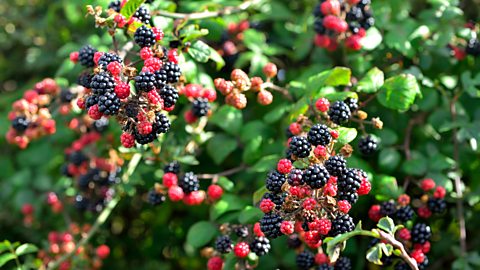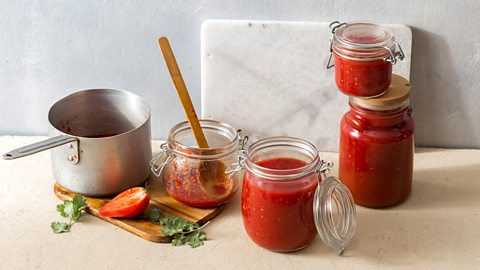Polyphenols explained, including the best food sources
They’re linked to numerous health benefits. But which foods are rich in polyphenols, and what foods are they found in?
By Jessica Bradley

What are polyphenols?
Polyphenols are compounds found in plants. They are described by scientists as ‘strong antioxidants’. They’re said to provide anti-inflammatory and anti-aging effects and there are thought to be more than 8000 polyphenols currently identified with many different types.
How do polyphenols benefit our health?
There’s growing evidence that polyphenols could help to prevent a range of chronic conditions, says Daniele Del Rio, professor of human nutrition at the University of Parma in Italy. This includes lower risks of developing cardiovascular, metabolic and neurodegenerative diseases, such as Alzheimer’s.
There is also research to show that polyphenols reduce inflammation in the body, which is a risk factor for heart disease.
In one study, participants who reported having the most polyphenol-rich diets had a 46% lower risk of developing heart disease than those who reported consuming the lowest amount of polyphenols.
Which foods are high in polyphenols?
Polyphenols are ubiquitous in the plant kingdom, says Del Rio.
You’ll find them in:
Fruit: Especially darkly-coloured berries including blackcurrants, blueberries, blackberries and elderberries.
Vegetables: Red onions, red chicory, globe artichoke heads and olives (we appreciate technically olives are a fruit) are said to be particularly high
Nuts with their skin on: Especially chestnuts, almonds, pecans and hazelnuts
Tea: Both green and black
Cocoa: Including dark chocolate
Dried herbs, spices and seeds: Including flaxseed, cloves, oregano, thyme and rosemary.
While herbs and spices have a very high concentration of polyphenols, Del Rio points out we eat a much smaller quantity of these compared to fruit and vegetables.
Extra virgin olive oil is also a good source of polyphenols as is tempeh.
Red wine is also a rich polyphenol source – although Del Rio advises against increasing your red wine consumption or relying on this as your main source of polyphenols!
How many polyphenols should we consume?
There is no recommended daily intake of polyphenols because they’re not classed as ‘essential’ for human development and growth.
“However, many research groups are working to prove that a sufficient amount of scientific evidence now supports a dietary recommendation for some specific subclasses of polyphenols,” says Del Rio.
One thing that has been well established, he adds, is that we all metabolise and absorb polyphenols differently.
“There are very clear and characterised differences among individuals in how they access specific phenolic metabolites within their bodies after consuming the same source.”
How to cook and eat polyphenol-rich foods
Want to get your fill of polyphenols in the tastiest way as possible? Here’s how…
Go off the boil
Polyphenols are generally stable at high temperatures, so significant amounts remain in vegetables that have been cooked.
“However,” Del Rio adds, “One significant exception is boiled vegetables, where some of the phenolics are lost in the water if the water is not used for other preparations within the meal.”
Bearing that in mind, you could either steam the veg, or just make sure you use the water within the dishes – for example in a stew or soup.
Use the whole plant
There are many fruit and veg that we unnecessarily get rid of the skin, peel, or roots of. But polyphenols are found in all parts of plants, especially the peel, so there’s another reason (in addition to avoiding food waste) to use those frequently-thrown out odds and ends.
Baked vegetable crisps
Don’t throw away vegetable peelings, turn them into crisps

Sally-Jayne Wright, food journalist, recommends using cauliflower stalks – which have the same flavour as the heads – in a cauliflower cheese or smoky bacon soup. All parts of cauliflowers contain polyphenols.
She also suggests using the leaves of many vegetables in cooking, including sprinkling celery or radish leaves (both are relatively high in polyphenols) in salads, or using radish leaves to make a pesto with olive oil, lemon rind, garlic and pecorino or parmesan.
Celery leaves feature in this Hairy Bikers’ recipe for Waldorf salad with grilled mackerel
“You don’t need to peel onions to use them in home-made stock/bone broth. The skin has flavour, too,” says Wright.
And you don’t need to throw out potato skins if you’re making mash.
“The skins taste great oven-roasted with sea salt and olive oil until they are crisp. If using the mash on a shepherd’s or cottage pie, put these crispy skins on top,” she says.
But there are some parts of some plants we should avoid, such as rhubarb leaves, as they’re poisonous and green potato peels, as they can cause an upset stomach.
Always add herbs and spices to your dishes
There are many ways to maximise polyphenol-rich herbs in our diets, too. Wright recommends adding herbs to salads.
“A burst of basil or chervil among mixed [salad leaves wakes up the taste-buds.
“You can also use herb oils to drizzle on fish, chicken and roasted meats, or herb butter for the freezer for the next time you’re making garlic bread,” she says.
Stock up and try new things
Keeley Haworth, chef and co-founder of London restaurant Plates, advises stocking up on spices and nuts.“Once you have an assortment of nuts in the cupboard they can be sprinkled and grated over so many dishes for added flavour and texture. Forget any rules and try different combos,” she says.
“Spiced nuts are even better adding more polyphenols, roast or pan fry with your favourite spices and then snack on them, add to salads or use a pestle and mortar for a finer texture and then top over curries, noodles, stir fries and sprinkle over your veggies too.”
Haworth also advises adding tempeh to your diet.“Tempeh is a powerhouse food in the plant-based world; it’s packed with protein, minerals and polyphenols and the fact that it’s fermented means that it is great for our gut health too.”
Originally published August 2024



